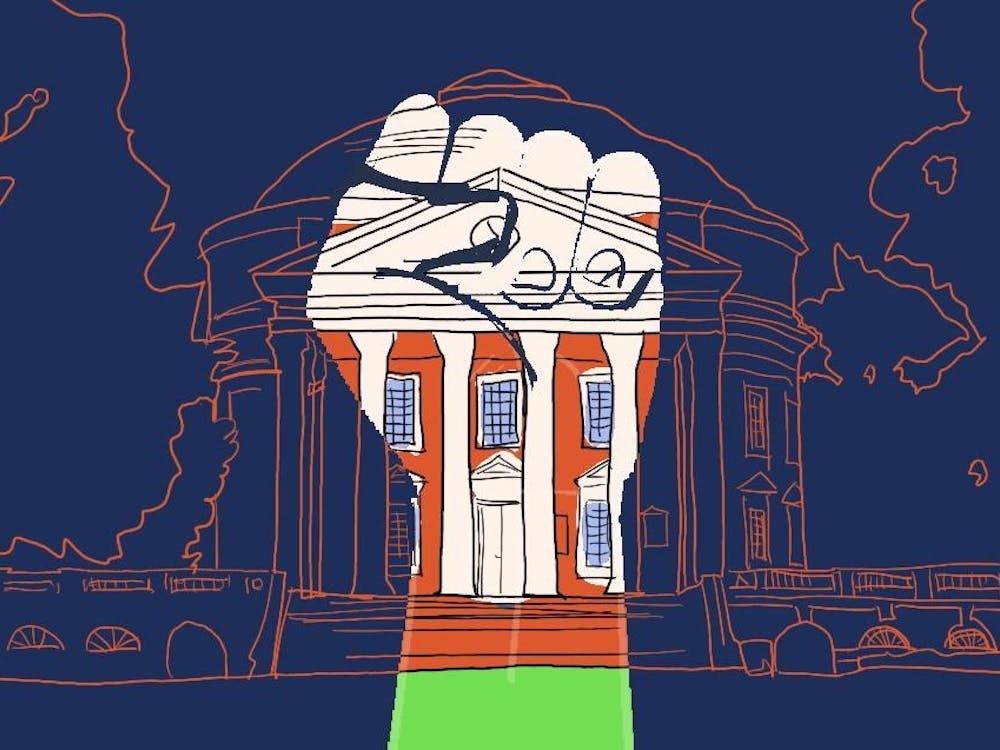The term “student activism” brings to mind the turbulence and chaos of the 1960s. I think of the Student Non-Violent Coordinating Committee (SNCC), and its heroics in organizing and participating in the marches and sit-ins of the Civil Rights movement. I think too of the more than 4.5 million students who went on strike in the aftermath of the 1970 Kent State University shootings. It’s hard to forget that the 1960s student activism movement was tinged with connotations of rampant drug use and sexual upheaval, but that is not to take away from the obvious successes of this era’s student activism.
In contrast, this University’s activism scene might appear dead. The University is game for one or two good protests a year — the Black Student Alliance’s recent rally against police brutality comes to mind, as does the furor following the announced cuts to AccessUVa last year — but apart from these and some other scattered examples, the University has been largely devoid of significant activist movements. However, I would actually argue that the University has a very healthy activism scene. It is not over the top in the manner of 1960s era Berkeley, but it is not frozen by any means. The University’s love for tradition, its penchant for discussing issues thoroughly before acting, and its brand of selective protest make for a special and practical place for the student activist.
This relative dearth of activism can be partially explained by this university’s general resistance to change and the power of traditional institutions. The Honor Committee’s single sanction, though some may argue the Informed Retraction has weakened it, remains intact despite decades of mixed student reactions. Greek life, a staple of southern college life for a century and a half, still wields great influence over the student body, despite comprising only about 30 percent of undergraduate students. Putting aside institutional continuity, even our social customs are very traditional. One glance at the student section at football games, with guys still in ties and girls still in pearls, proves that this is a place where old traditions die long and slow deaths, and often seem like they will live forever.
With this in mind, where can the student activist fit in? The University’s reverence of its traditions and institutions is a blessing to its students in many ways. The Honor system does, for all its faults, encourage an academic and social atmosphere where students feel much more trust in their peers than at other institutions. The Greek system, for all of its respective faults, adds a valuable component to — but does not completely dominate — the social scene. Undoubtedly, both the Honor system and the Greek system have their shortcomings. But because of these organizations’ (and other similarly revered institutions, such as the University Judiciary Committee) long history of service to the University community, the student activist must not create upheaval for the sake of upheaval. The student activist must be prudent in his or her push for change by pushing for concrete achievements, such as when the Honor Committee advocated for its Restore the Ideal Act in the spring of 2013.
It is crucial for the student activist to take the temperature of the student body before pushing for change. With this in mind, organizations such as Sustained Dialogue, which debate and discuss issues of importance to this University and the larger world, are a critical resource. I often hear, anecdotally, frustration with organizations such as Sustained Dialogue because they are based in discussion, and not action. To these complainers, I would remind them that movements with no basis in intellectual thought or discourse rarely succeed.
The student activist may throw caution to the wind in the event of a clear moral dilemma, along the lines of Jim Crow segregation. But does an analogous dilemma exist today? It is difficult to say. The closest comparison would likely be the movement to eliminate sexual assault from college campuses. Everyone agrees that sexual assault is wrong, and so the current rush to speak out against sexual assault is in many ways a wonderful development (whether or not it may lead to wanton accusations and the trampling of due process rights is an issue for another day). The current movement of sexual assault awareness seems a striking example of selective activism near its best. And so when a clear moral dilemma arises, the student activist has a duty to respond accordingly.
All of this is to say that the University actually provides a very healthy climate for student activism. Our reverence for tradition, combined with a thorough examination of issues and a keen sense of when to act, gives this University the confidence to uphold the traditions that make it great and the strength to change them when necessary.
John Connolly is an Opinion Columnist for The Cavalier Daily. He can be reached at j.connolly@cavalierdaily.com.






